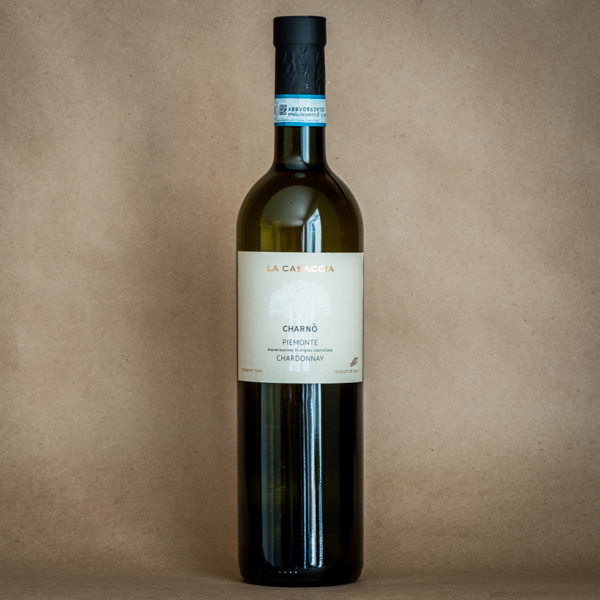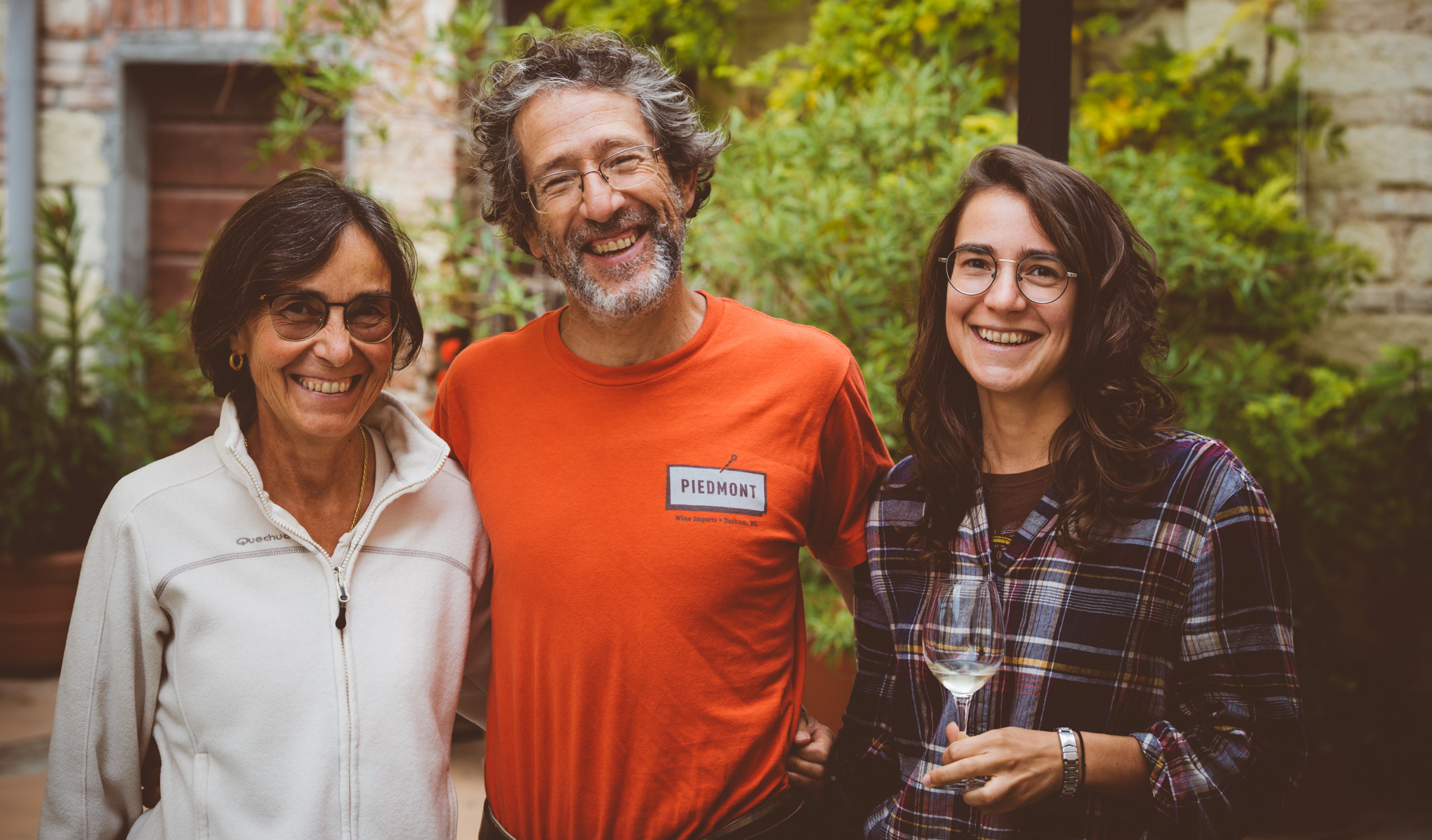
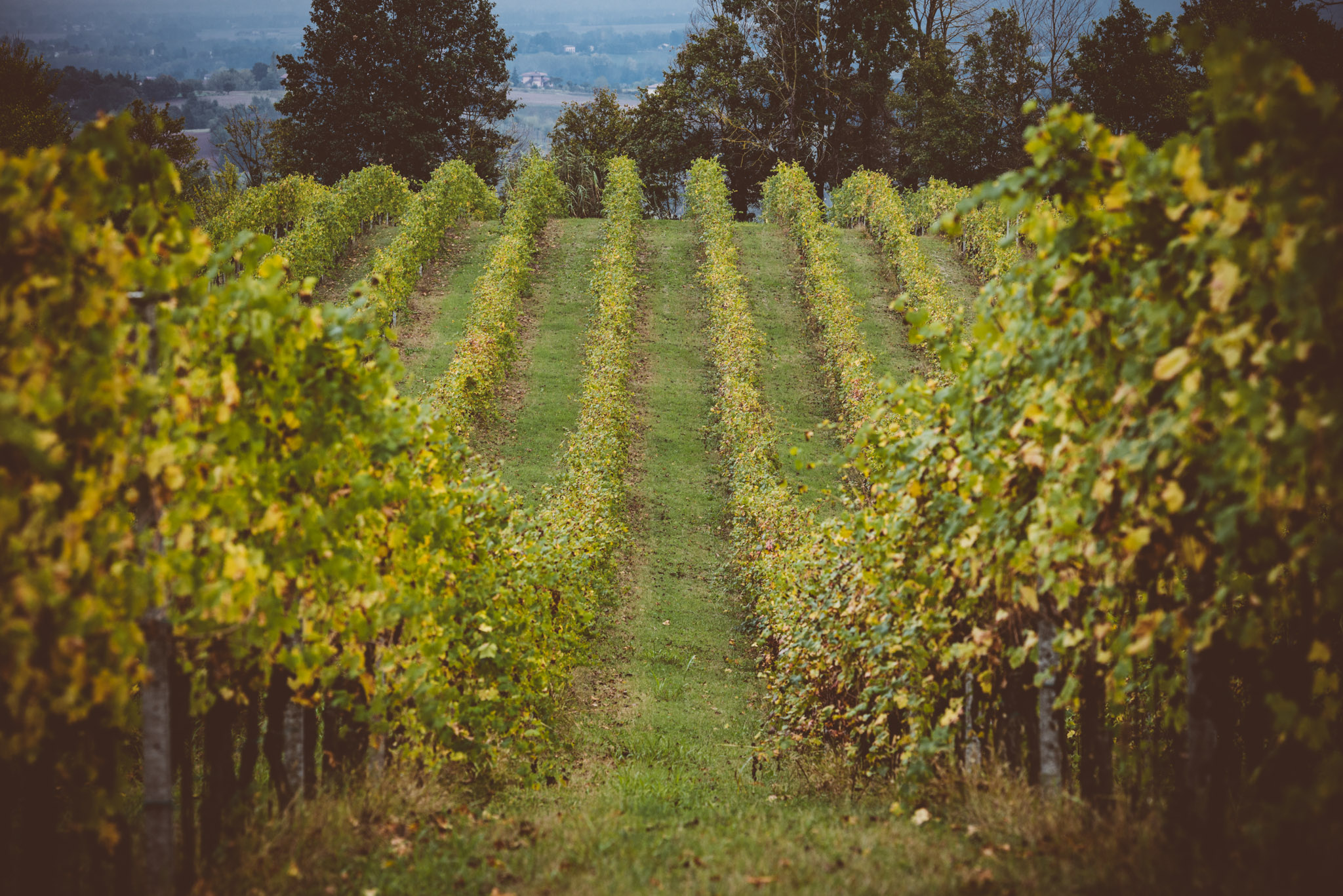


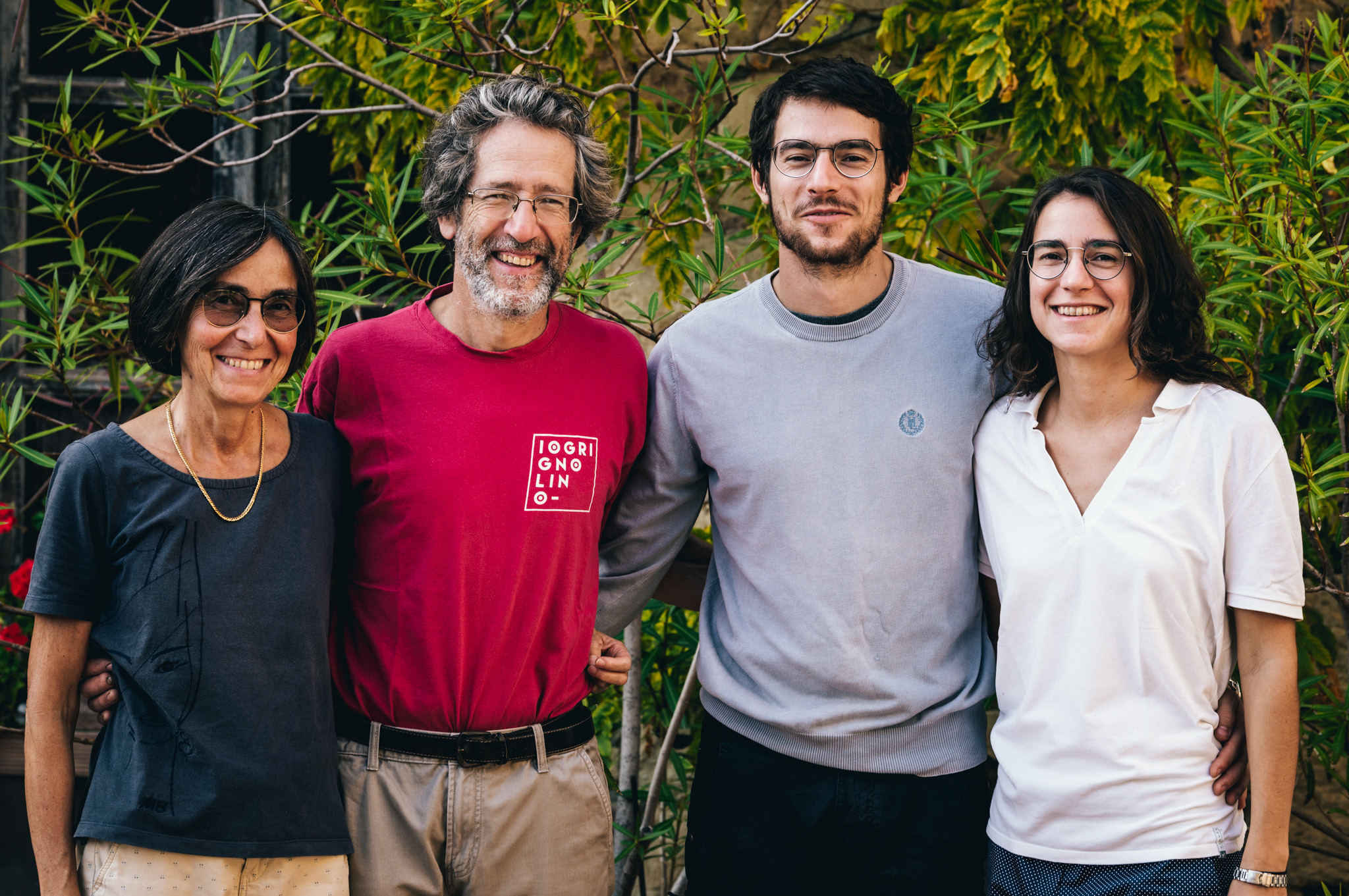

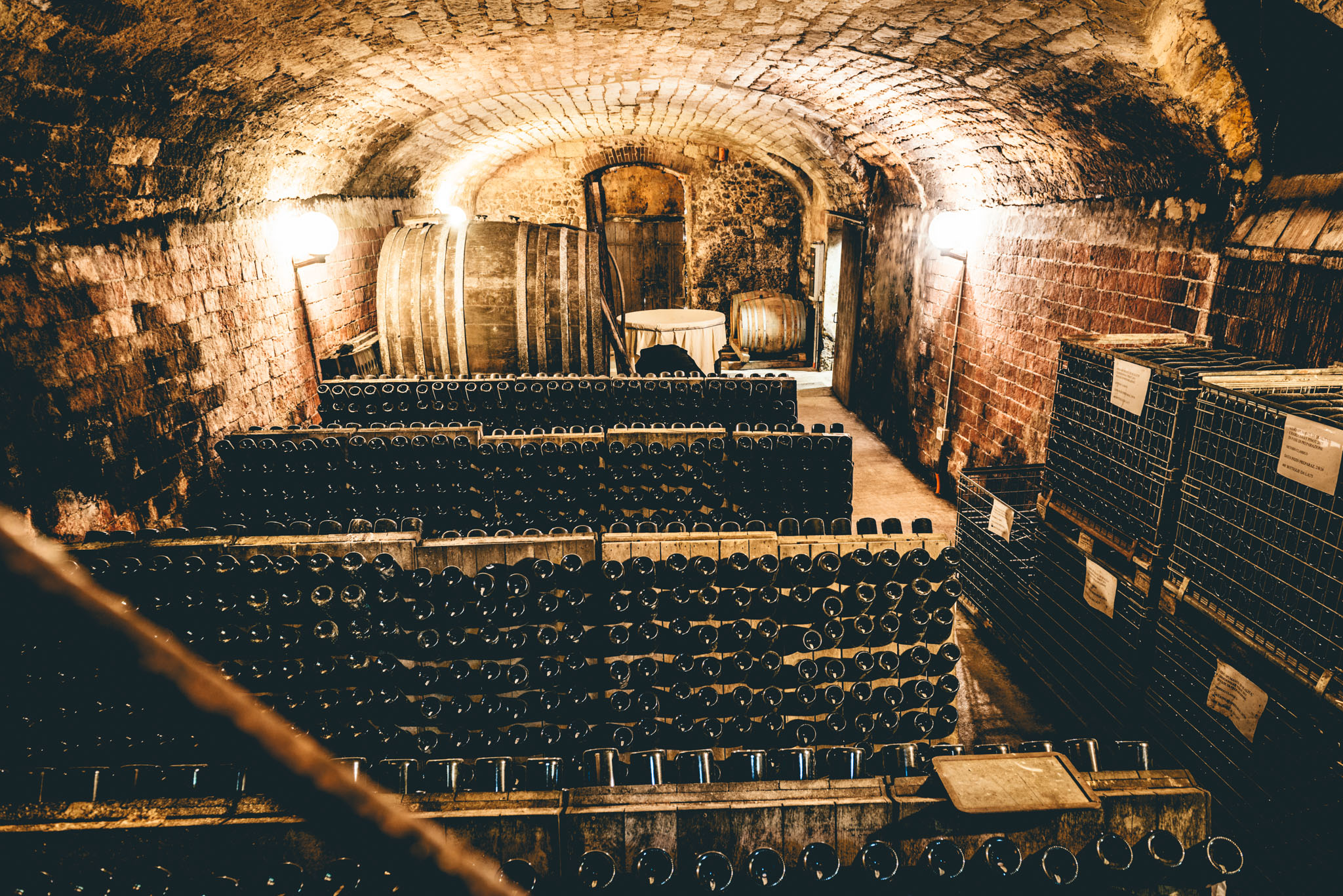
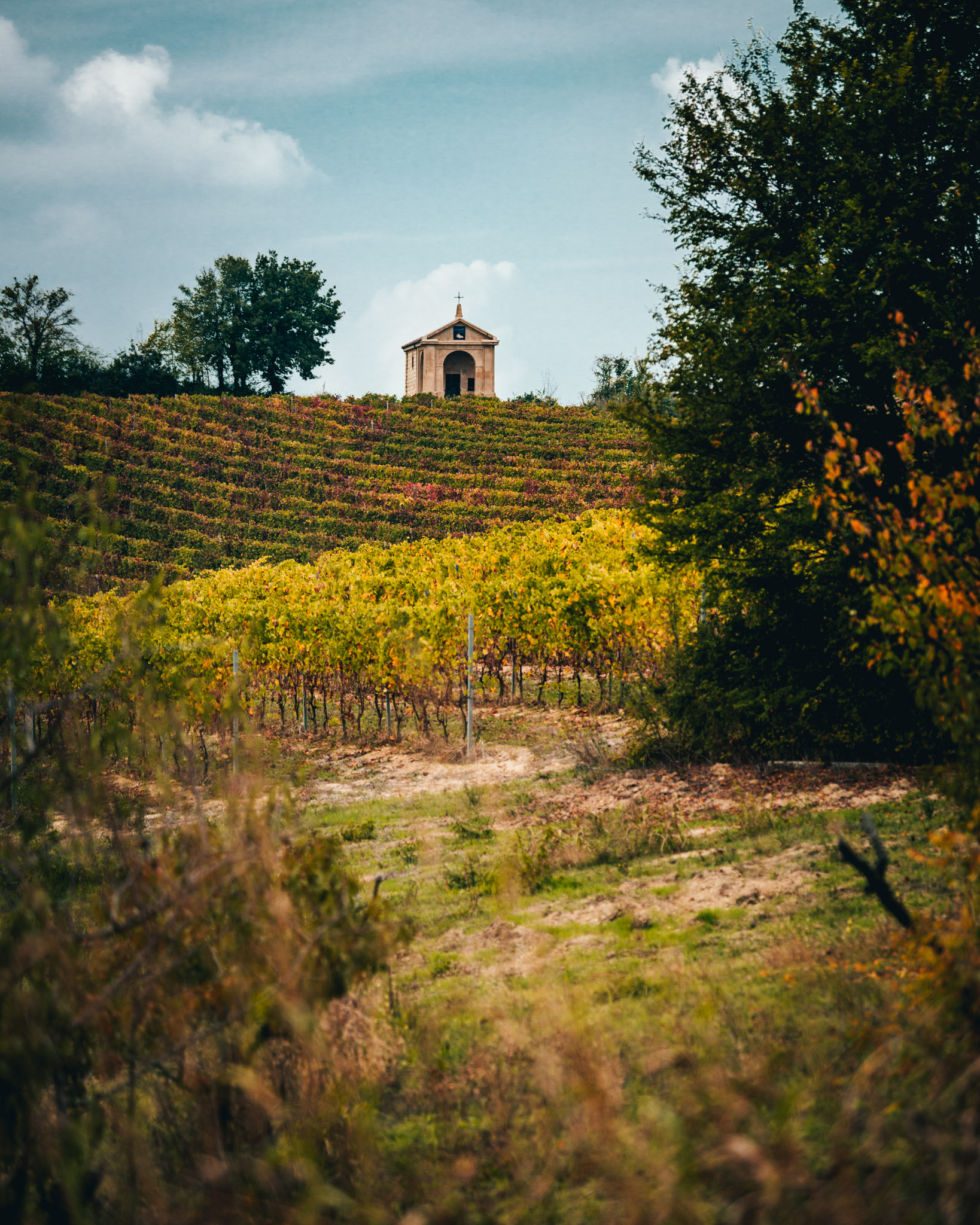

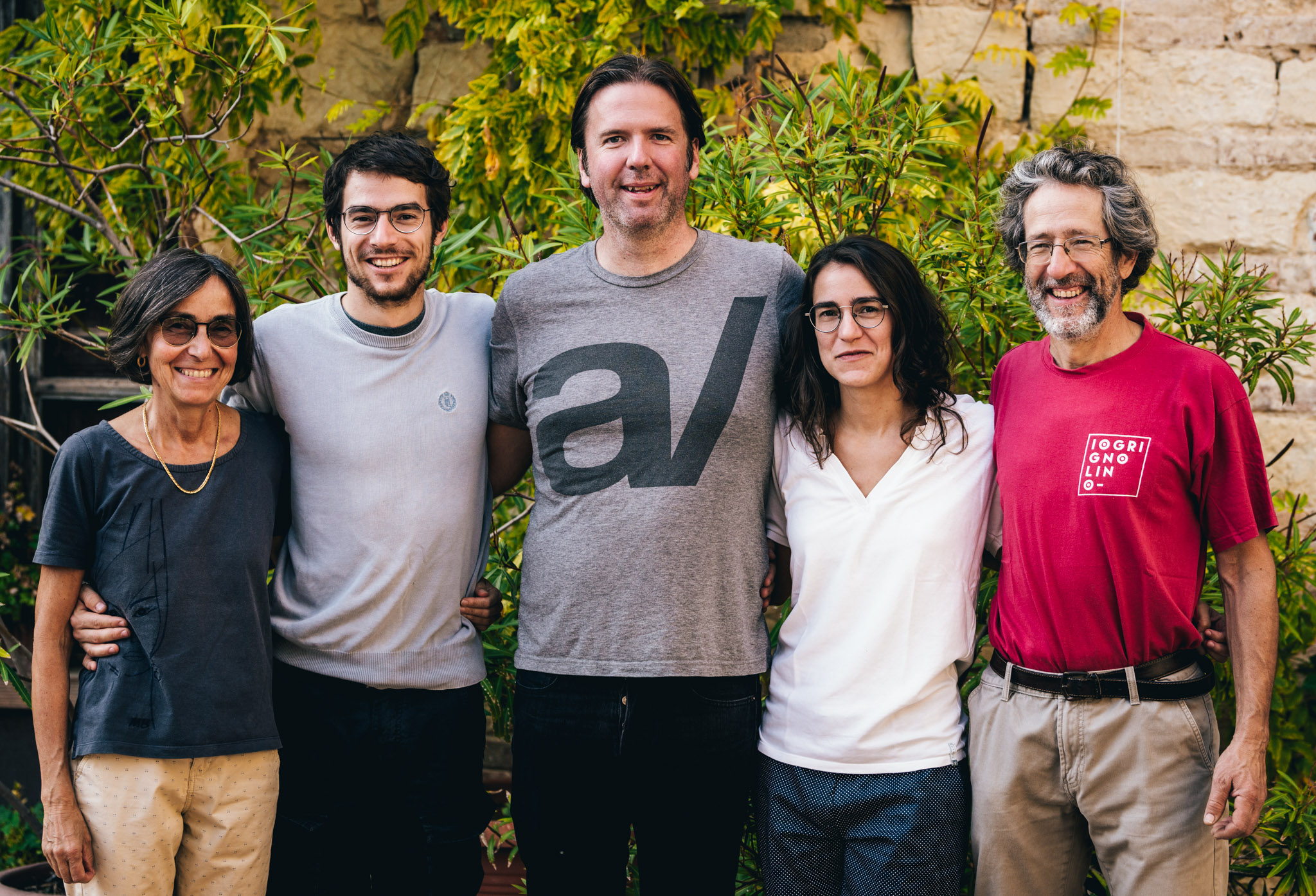
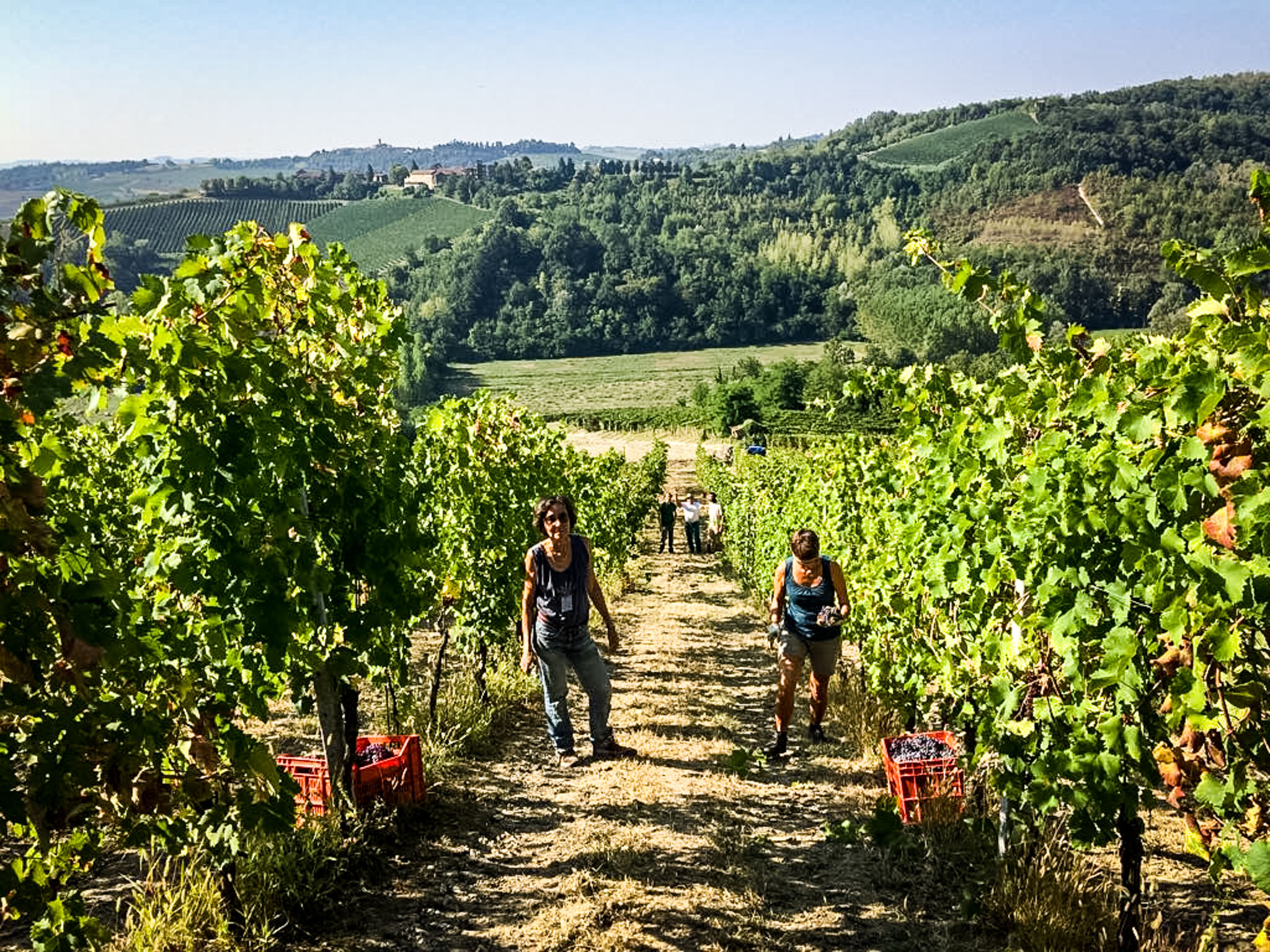

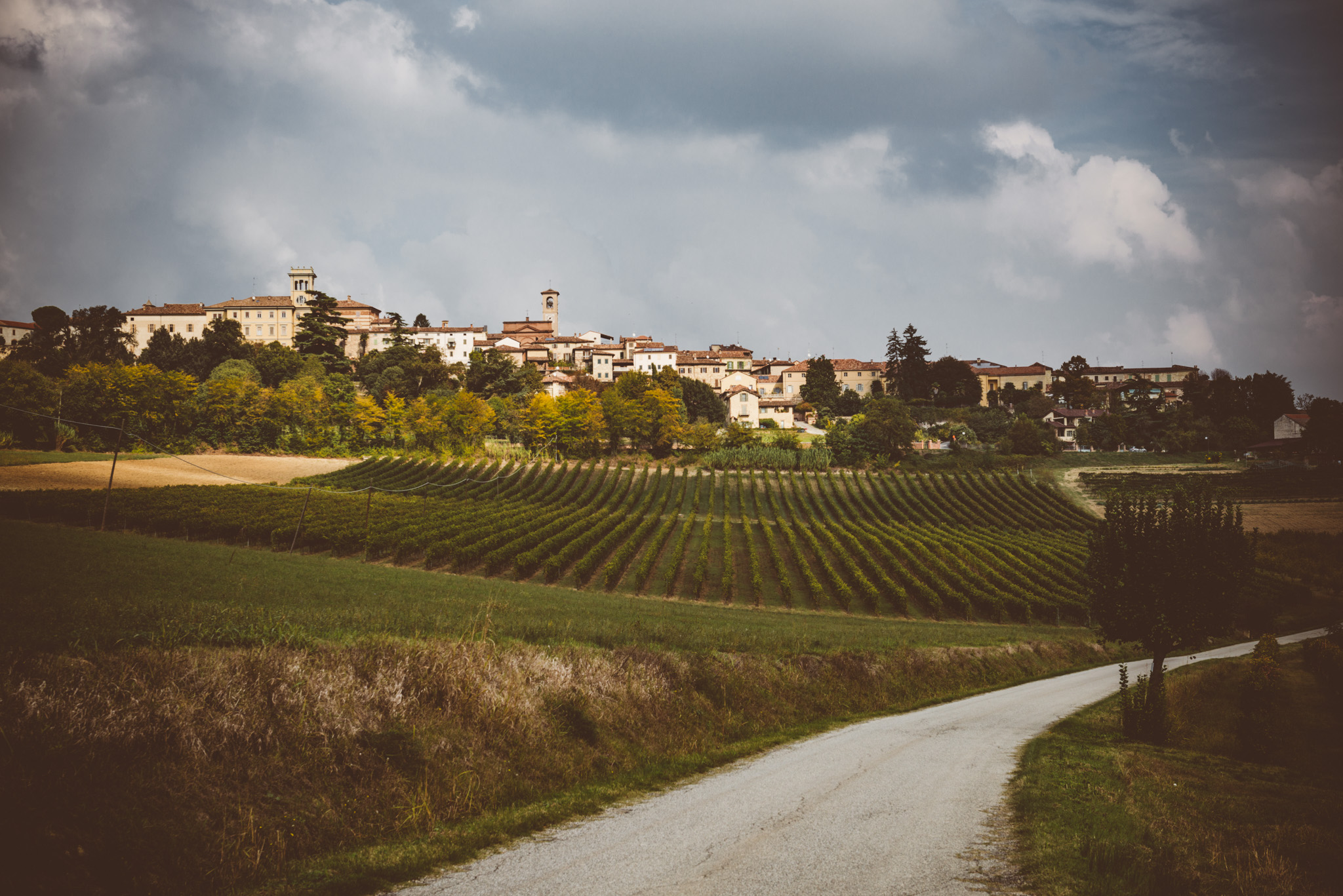

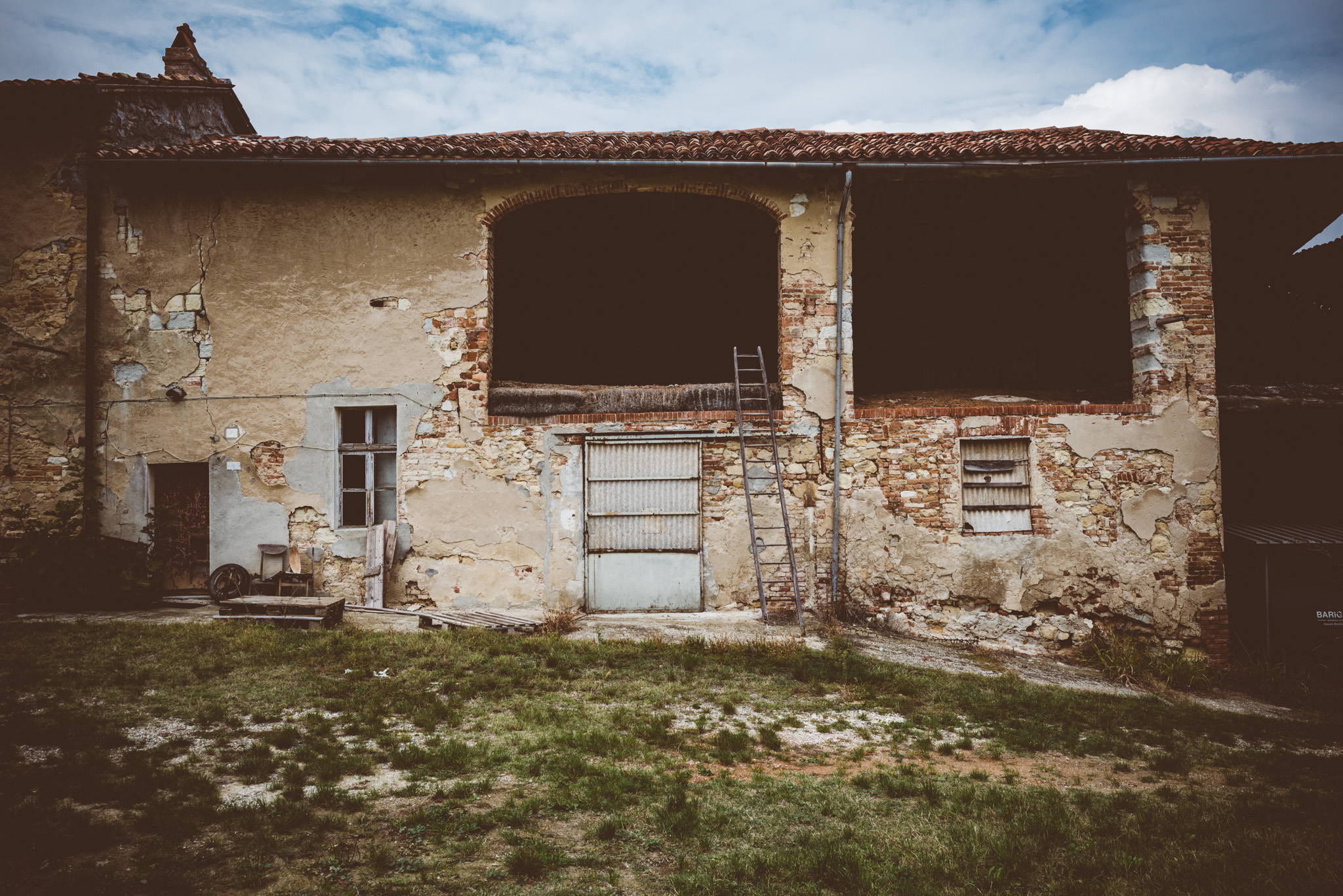
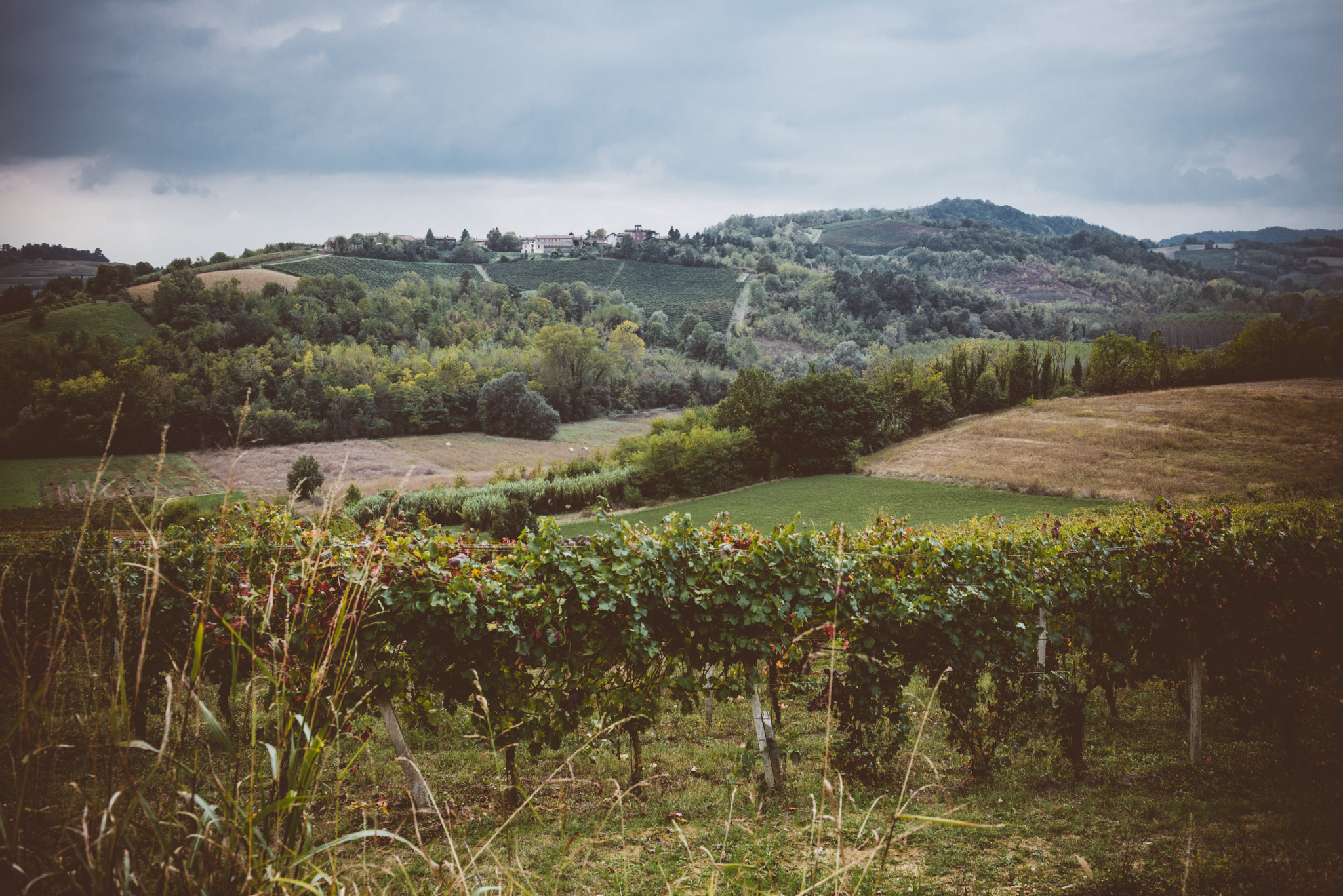
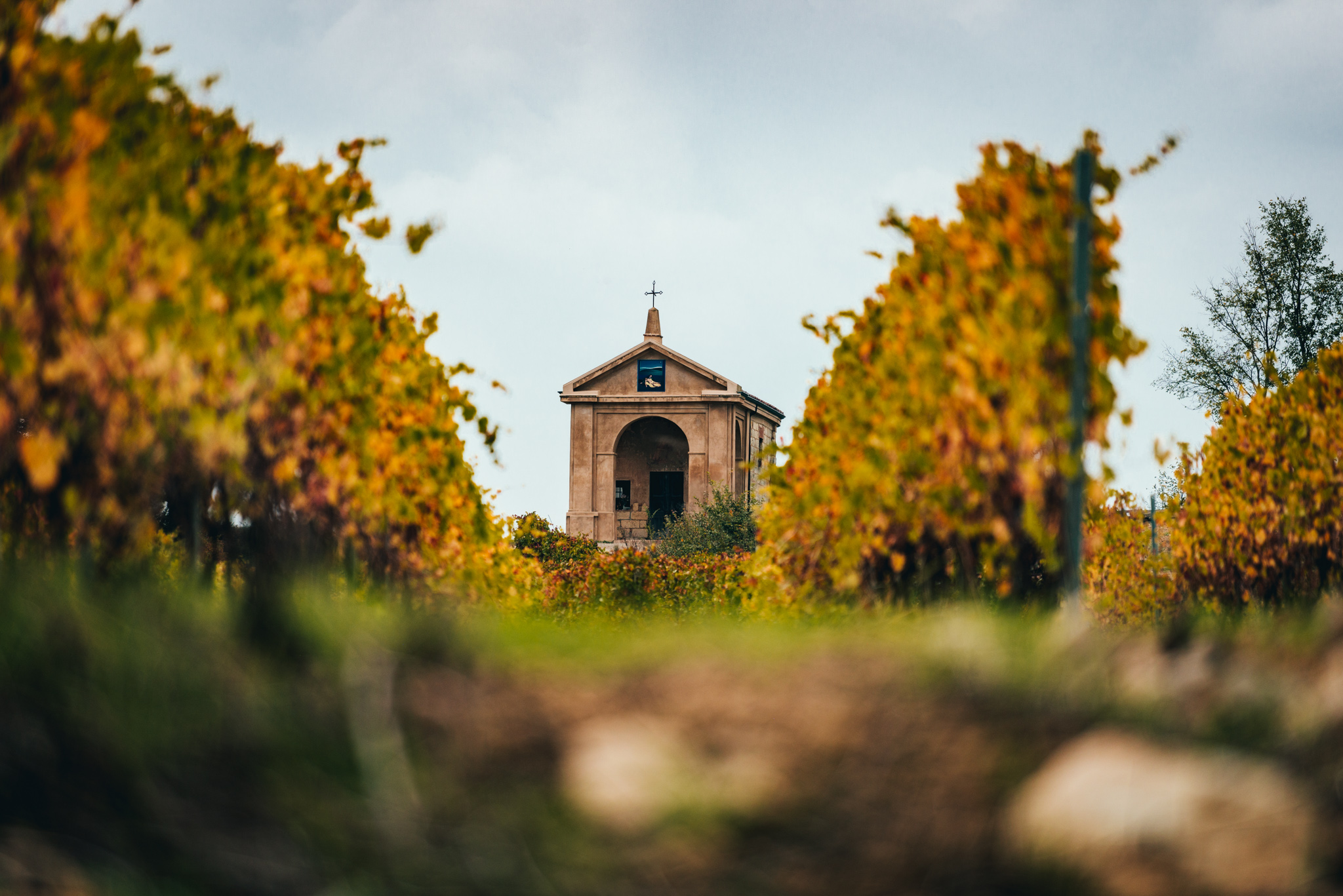
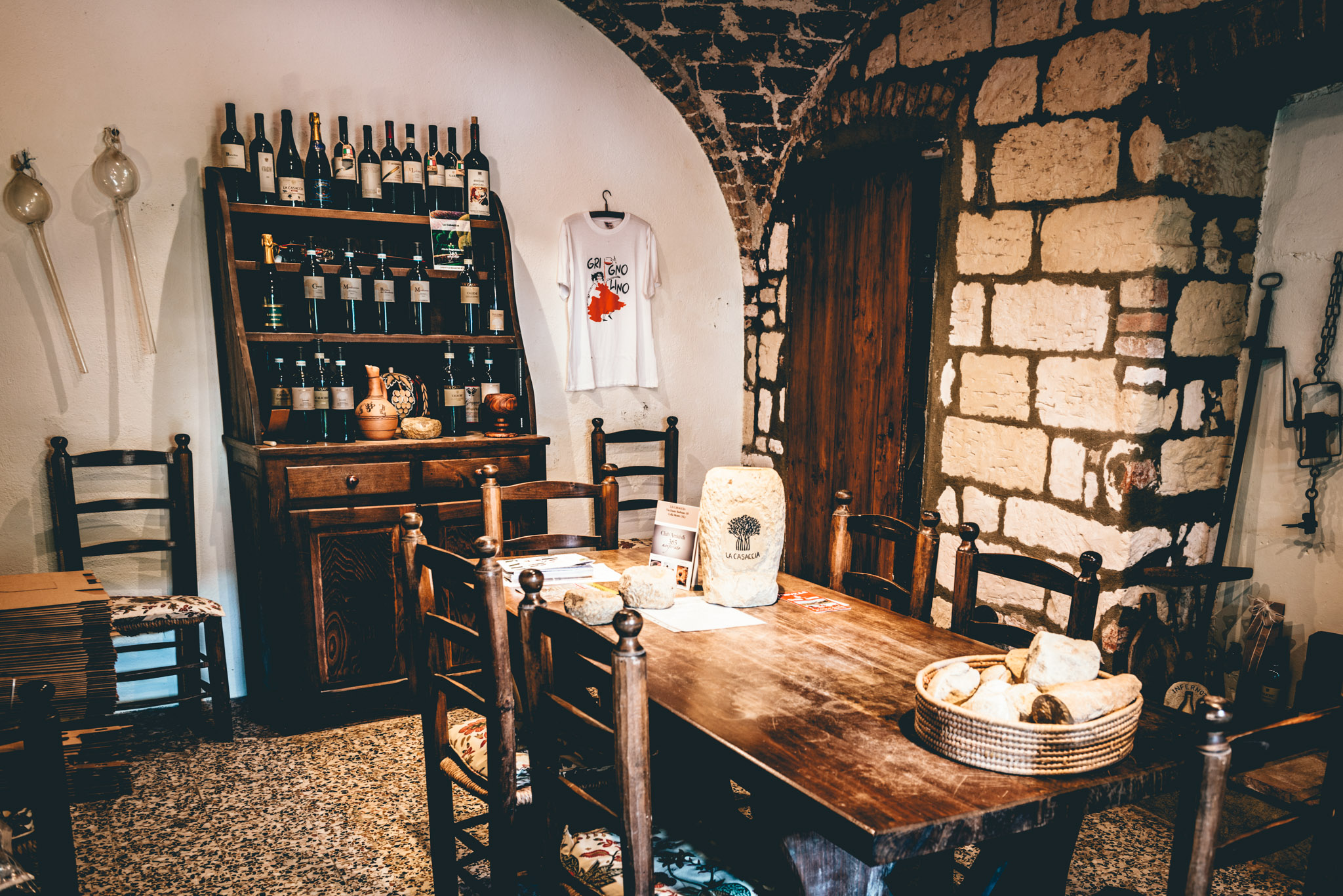



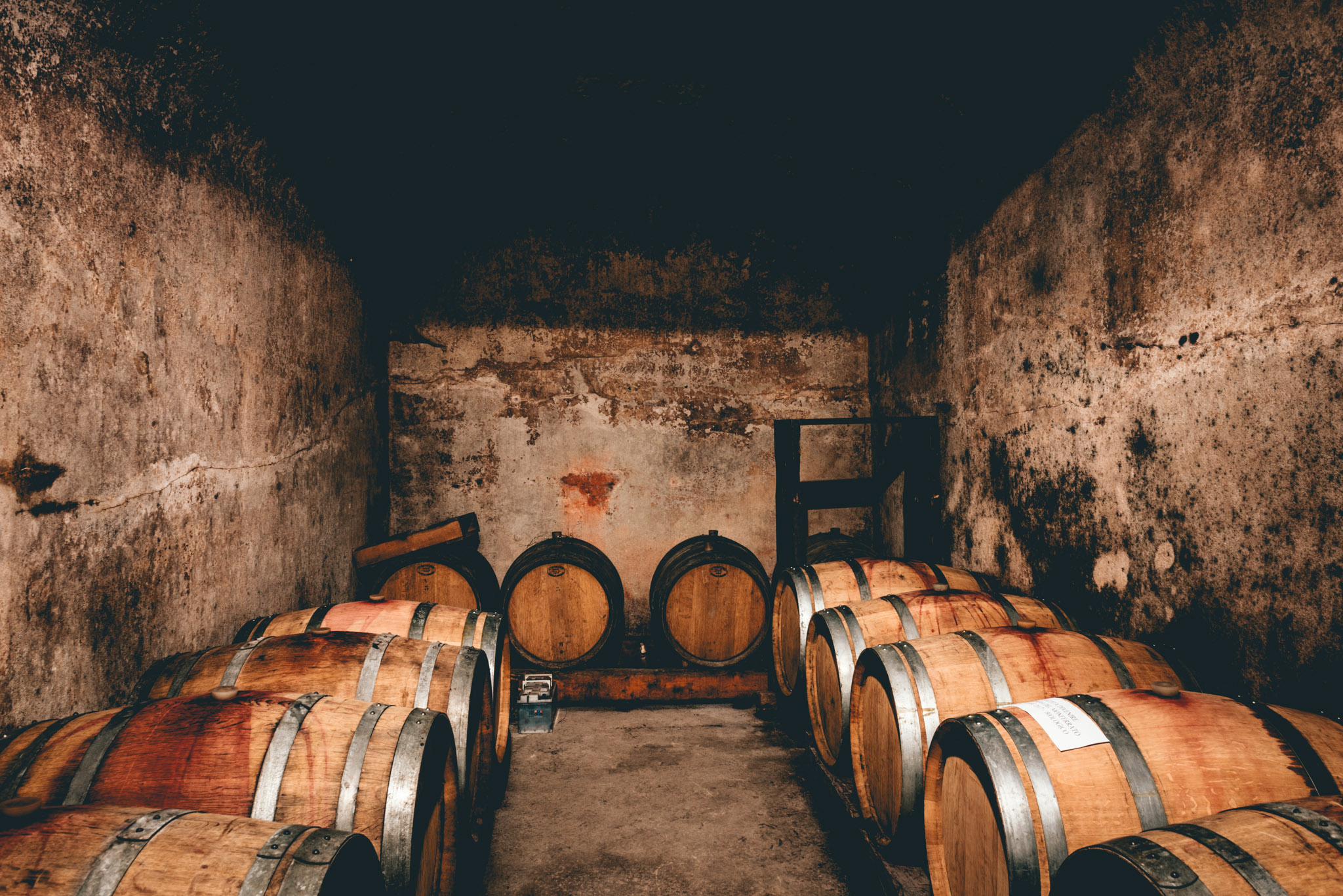
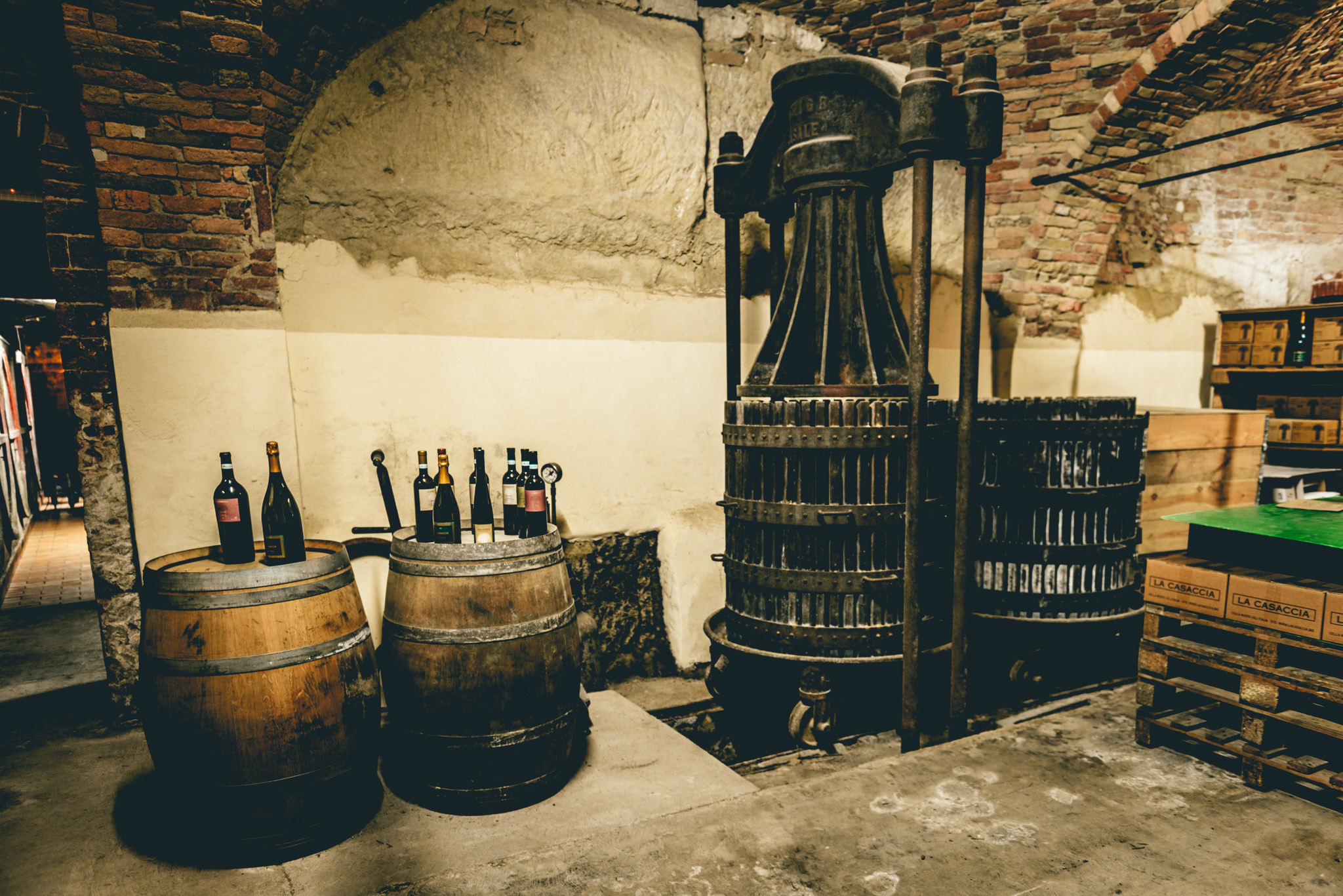

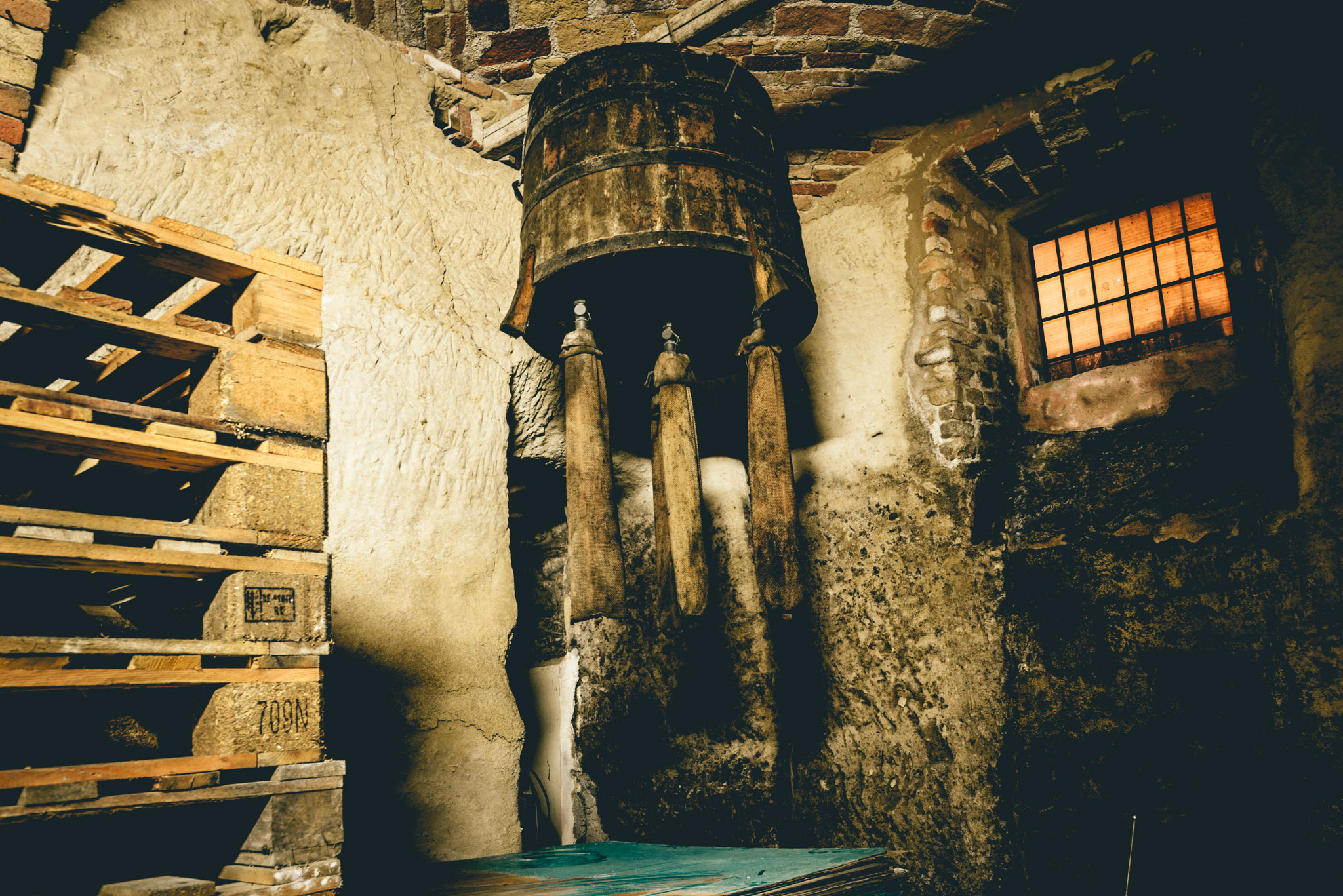

La Casaccia
Who: Giovanni & Elena Rava, daughter Margherita and son Marcello
Where: Cella Monte, just south of the Po River (Piemonte, Italy)
What grapes: Barbera, Grignolino, Freisa, Chardonnay, Pinot Nero
Key facts: Certified organic. The underground cellar of this estate is entirely carved into sedimentary “Pietra da Cantoni” stone, which you see above ground in all of Cella Monte’s buildings. Their cellar, carved out by their great-grand father was recently declared a UNESCO World Heritage Site.
Website: http://www.lacasaccia.biz
Instagram: @lacasaccia
La Casaccia “Charno” Chardonnay Piemonte DOC
Viticulture: Certified Organic
Soil type: Limestone/Chalk
Elevation: 450m
Grapes: 100% Chardonnay
Method of fermentation: Temperature-controlled stainless steel with ambient yeast.
I drink more Chardonnay than your average insufferable wine snob, and it’s not all Chablis and unicorn white Burgundies. The Ravas make a white that has ripeness and restraint. It makes me think of the balance in Italian cuisine. There’s generosity of flavor, but a reticence to tip overboard to gluttony. This white is leesy but not oaky, ripe but still bright, lemon to balance the apple. — JM
La Casaccia “Monfiorenza” Freisa Monferrato DOC
Viticulture: Certified Organic
Soil type: Limestone/Chalk
Elevation: 450m
Grapes: 100% Freisa
Method of fermentation: Temperature-controlled stainless steel with ambient yeast.
Macerated strawberries. Star anise. Nebbiolo’s cousin makes me understand those autumn people who wax rhapsodic about raking leaves and cooking gourds. Freisa at its best smells like a chilly October evening, a night where I’d want to eat tacos de birria on the screen porch enveloped by the blood orange sunset. Maybe have a second glass in the gloaming, or by candlelight. — JM
La Casaccia “Poggeto” Grignolino del Monferrato Casalese DOC
Viticulture: Certified Organic
Soil type: Limestone/Chalk
Elevation: 450m
Grapes: 100% Grignolino
Method of fermentation: Temperature-controlled stainless steel with ambient yeast
Certified organic. Poggeto is the top of the hill owned by Giovanni Rava and his wife Elena. It is quite close to their cellar in the village of Cella Monte, in the northern Monferrato. The vines are at high elevation (450m above sea level) and grow in limestone rich, brittle and porous soils. Mineral character, great drainage, low soil fertility and cool temps. play to the strengths of thin-skinned, seedy Grignolino. The wine is fermented and aged in stainless steel at cool temperatures in the 18th century cellar under their home, resulting in a wine that is distinctly bright, aromatic, and thirst-quenching.
Floral. Dry tannin. Red fruit. Spice. The best of Piemonte’s many perfect-for-summer red grapes is thin-skinned and full of seeds, leading to wines that have a pale cherry color and palate dusting fine tannin. You can drink this at room temperature, but it really deserves to be 55 degrees. My current favorite pairing (of many) for Poggeto is chunks of fatty trout crudo garnished with parsley, black sesame, and a splash of mild citrus. — JM
La Casaccia “Giuanìn” Barbera del Monferrato DOC
Viticulture: Certified Organic
Soil type: Limestone/Chalk
Elevation: 450m
Grapes: 100% Barbera
Method of fermentation: Temperature-controlled stainless steel with ambient yeast.
Accessible. Ripe. Low tannin. The Rava family have organically farmed a 13-hectare hillside near their home in Cella Monte (near Casale) for over two decades. All the fruit for their red wines comes from one hill. Barbera is planted mid-slope. Giuanin is fermented in temperature-controlled stainless steel, in an 18th century carved stone cellar underneath Giovanni and Elena’s home. It’s an amiable one: ripe, accessible, pretty delightful with most meals. Within reason (looking at you, pickled beets.) — JM
La Casaccia Vino Spumante Metodo Classico Brut
Viticulture: Certified Organic
Soil type: Limestone/Chalk
Elevation: 450m
Grapes: Pinot Noir, Chardonnay
Method of fermentation: Temperature-controlled stainless steel with ambient yeast.
Certified organic, hand-riddled in a carved-from-stone cellar dating to the 18th century. Five years on the lees make this sparkling wine an exceptional gift. Margherita and family pamper it. I always wish there was more. The chalk soils of Cella Monte and the cooler, high elevation vineyards of Monferrato Casalese contribute to a finer style in this release. Airy and delicate. Serve with sole meunière. Hey, I know sommeliers spout irreverent pairings nowadays, and I’m cool with your Lay’s potato chip and Champagne everyperson relatability. Sometimes you gotta cook a fish, or make your friend from the CIA do it.
La Casaccia — April 2022
Margherita has a surprise. She’s animated. All smiles is her default setting, but something is different today.
We’re meeting in a strange setting. Cold for such a warm person, whose place in my work life has become closer to a friend than a wine provider. We’ve gone running together, in Durham and in Cella Monte. We’ve shared too many meals to count, and spent hundreds of hours criss-crossing my home state selling wine. We’ve even picked grapes together.
It’s a strong bond, made in the spaces where we live and work. But today we are meeting in a vast conference center in the drab industrial outskirts of very beautiful Bologna. It’s the first-ever Slow Wine fair, and I’m happy to be catching the last few hours of a three-day event. Time enough to reconnect with a half-dozen winemakers whose bottles will be in our warehouse this spring.
The surprise: La Casaccia have a new wine! A metodo classico rosato, lees aged for two years. One hundred percent Grignolino. The label is fanciful. It mirrors Margherita’s ebullience. The wine smells of strawberries. The new wine is a success. It’s nice to see her happy, and proud of this project.
Speaking of Grignolino, 1,200 bottles of the ever-popular “Poggeto” 2020 Grignolino del Monferrato Casalese are arriving now. It’s basically why you have this missive to read. The flagship red wine for Margherita’s small estate spends three days on the skins. It’s quite floral. Poggeto is a wine of enduring aromatic appeal. There’s always a fine edge of tannin. Margherita says Grignolino is quite resilient in the face of climate change. Good news, because I need bottles for my summertime chillable red wine fridge, no matter how high the mercury rises.
Also arriving now are 900 bottles of the 2019 “Giuanin” Barbera del Monferrato. The wine is accessible, ripe, as reliable as anything we import. Little to no tannin, fresh acidity, and an overabundance of pure plummy Barbera fruitiness. If you’ve spent too much time in challenging, hipster hairshirt wine purgatory lately, here’s the remedy.
The 2019 “Monfiorenza” Freisa feels structured alongside the Giuanin. It smells like macerated strawberries. Also faintly floral, and a tad spicy. There’s some dry tannin on the finish. If you love classic Piedmontese reds but occasionally wish the linear aromatics of your favorite Langhe Nebbiolo would loosen up a little bit, check out Monfiorenza.
For a short time there will be 2020 La Casaccia “Charno” Chardonnay in North Carolina. Unoaked, lees-aged in stainless steel, it overdelivers in a very similar manner to the La Ca Barbera. If you enjoy the low-key appeal of Chardonnay that isn’t trying to be Meursault or a fruit cocktail, this wine can be an unfussy visitor to your dining table. Loud and dissonant flavor gets noticed and rewarded. It’s a relief to taste a white that’s succeeding with quiet charm.
Also tasted: The 2015 “Ernesto” Grignolino has come a long way since Margherita and I first tasted it in their cellar a few years back. At that time I was uncertain about the desire (rooted in tradition) to long-age Grignolino in large wooden tank. Now I see that the Rava family were correct. After three years in barrel and two in bottle, the wine has become really nice. It smells good, a mix of Grignolino’s red fruit and secondary maturation characteristics. Everything that stood out as disjointed mid-project is harmonious now.
2017 “Bricco dei Boschi” Barbera spends one year in big barrel. Each year La Casaccia bottle their best Barbera vineyard parcel as Bricco dei Boschi. The 2017 is remarkably good. Deep black fruit aromas, secondary spicy notes. Graceful texture. I typecast La Casaccia as making reliably delicious everyday wines. This bottling shows an estate whose top wines are worthy of consideration among the best of the Monferrato.
We went to dinner. Left the antiseptic environment of the convention center, for a very neighborhood place called Nonna Rosa. The restaurant’s walls were covered in movie posters, coffee grinders (?) and a large collection of signed Bologna FC jerseys. Dinner was nice. We laughed a lot. It was unpretentious and good. The rooms bustled. Somehow I ordered tortellini in cream sauce, followed by a veal cutlet in cream sauce. I was so full. Margherita walked me halfway back to the city center. I needed the steps. And the cool air. Margherita had a mushroom ravioli (she’s vegetarian.) By the end of dinner I envied her selection. It looked great. I don’t think she was dying from calorie poisoning. I was grateful for the miles of covered sidewalk that make central Bologna exceedingly pedestrian friendly, even when the weather is a tad damp. I looked at some centuries-old dormitories and churches, then called it a day. Dreamed of being chased through a maze of ever narrowing roads by a mob of rabid chefs wearing cappellacci. Bloody chef’s knives drawn, ready to carve me up for scaloppine. Kafka's cream-fueled calorie nightmares.
Giovanni Rava makes too many good wines. We want to buy them all. Their style is refreshing, intellectually and physically, and reflects positive elements of the character of Giovanni and his family.
La Casaccia means “shitty –looking house” which is an overstatement, even during its recent period of construction dishevelment. Giovanni Rava and his wife and son Marcello are restoring a portion of their 17th century home to be an agriturismo. The building surrounds a courtyard and rests above a deep cellar carved into stone. The place is calming, a refuge from the (not terribly bustling) town of Cella Monte outside their front door.
The Ravas are energetic, intelligent, easy to engage. Their property came in the family’s hands over three centuries ago. Genoese aristocracy bestowed a royal seal upon the wines of La Casaccia during that era. Centuries passed, and wine became a secondary product for the family. Eventually only scattered patches of vines were in cultivation by extended family members, and no wine was being made at La Casaccia.
In 2000 the Ravas decided to leave their careers as organic agricultural extension agents and bring their work home. They began with vines that had been tended by aunts and nephews, eventually piecing together a 6 ½ acre estate. Two more hectares will be planted soon. The vineyard work is informed, certified-organic, the practical application of two viticulture degrees and 1,000s of hours of thought and advice. All the fruit is harvested by hand in small baskets, then carefully triaged at the cellar. Grapes are moved via gravity from ground level into the winemaking facility. The cellar itself is perfect for producing quality wine. Deep underground and naturally cool, it is a thoughtful combination of the modern equipments and ancient space. It is remarkably clean. Cool old presses and disused filtration equipment rub shoulders with temperature controlled fermentation vats, bottling, corking and labeling equipment.
I had a lovely impromptu lunch with the Ravas. They served handmade fresh pasta (agnolotti) and two types of local salami. The salami are made by the son of the woman who makes the meaty, rich fresh pasta we consumed. Cella Monte can’t have more than 500 residents, but the hamlet supports two competing salami makers. Italy can be great.
The future here is very promising. Margherita Rava is clearly very bright, and as the next generation she will inherit an estate already operating at a high level of quality that has the capacity to effortlessly double its current 30,000-bottle production. There are many good wines to come from La Casaccia.
September 10-11, 2015- La Casaccia Today!
Picking grapes is a decent way to get through jet lag. It’s something to do. The time passes quickly until an hour when the sweet, sweet sleep you crave is advisable. Sunlight scrubs gross airline recycled air from your skin.
I would be a terrible farmer. For core, essential reasons. Number one: absence of patience. This morning it is rainy and cold: not a time to pick grapes. So we wait. But I don’t want to wait. I want to pick Barbera. Yesterday we breezed through the last rows of Grignolino. The grapes were so perfect from a warm, dry summer that La Casaccia can even risk the harvesting assistance a bumbling American importer. On my first day of picking (ever) there was really nothing to triage. I discarded one rotten bunch in a half day of casual cutting and talking. Apart from removing the occasional section of dried grapes and skipping a tiny portion of still-ripening clusters, we simply loaded up bright orange small crates with Grignolino that looked ready-to-eat. Hard not to eat a little….
Everybody is in a good mood. Our team is led by heir-apparent Margherita, co-captained by long-term assistant and college buddy Federico, ballasted by Alejandro from Argentina, a young man of agricultural experience, but rooted in the cultivation of cereals, and rounded out by a WOOFer, Anna from Helsinki. She is as untrained as me, but has been working at La Casaccia for a few weeks, in route to a future apartment in Milan. She is a mid-30’s nomad clearly untethered from worldly concerns, strikingly happy. And then there is me, grubby, fresh off the plane.
In a lesser vintage pickers feel mired in place, crawling along rows, painstakingly extricating damaged and dangerously blemished sections of berries. This year it’s full-speed ahead. Giovanni is in the cellar with his mentor Cecchino, a man who has made wine in Cella Monte for 51 years. What an amazing asset! Every vintage since 1964 has been handled by this spry 83-year-old. He has dealt with every conceivable obstacle. Frederico and Margherita are in awe of him, actively soaking up his experience. Federico says you can never work hard enough to keep up with (or satisfy) the old timer. He just doesn’t quit, or cut the youngsters any slack. Cecchino unloaded cartons of grapes and ran the de-stemmer until long after sunset. And he looks really healthy, strong even. Incessant work has given him the frame of a man 30 years younger. I’m not kidding. The dude is always working.
After the last parcel of Grignolino was picked, we went for a walk past abandoned and nearly-abandoned fields worked by the elderly and part-timers, parcels trellised in outlandish and outdated ways, past fig and apple trees, over hills and through cool verdant stands of forest. Federico points out the house of his dreams, Il Paradiso, a really perfect old farmhouse looking out over several hectares of fallow land coveted by Giovanni. The route we take is quiet save the odd tractor and wasp. We pause to look at vine leaves beleaguered by oidium and other maladies, we have time to talk about domestic and foreign economics. I like that Italians are more inclined to daily discourse on large matters political and otherwise, but this conversation initiated by Federico is not theoretical: he is approaching the end of a university oenology program and is weighing options. I give him my frank assessment based on some travel in Italy, and gut feeling. For him, America could be a smart move. Margherita is in a good position, her parents built something amazing against the odds: she can succeed. To start something new in Italy, Federico’s challenge… the odds are stacked against him. Taxes, bureaucracy, a waning domestic consumption of wine, a stagnant (or worse) economy… moving makes sense. And he’s a trained sommelier and cheese expert with experience selling Italian wine in the very competitive Shanghai market. In the U.S. these are marketable skills.
At the last minute I packed a sweater: northern Italy, I know your tricks! And against the run of recent sunshine and predictions of my iphone, it’s pretty chilly this morning. And I’m about to go underground to check out the first fermentations. In an average vintage, natural fermentations take a day or two to start in a cold cellar. Not in 2015! Wild yeast are healthy and abundant, their natural competition (unwanted bacteria) is on the run, virtually nonexistent. Giovanni said he put his Chardonnay in tank and came back just a little later and the fermentation was beginning. He usually cultures a small vat of starter yeast from his own fields, this year it’s barely needed. Large concentrations of healthy yeast and other microorganisms are the backbone of successful organic farming. La Casaccia’s wines are clean and stable because they nurture and protect this unseen resource.
In the end, the sun won out and picking went on unfettered from mid-morning until 6pm. Two regular employees from Moldova, and a childhood friend of Margherita’s joined the team. It was tough. Today’s Barbera grew on a high sun-exposed sight that fared poorly in the atypically warm 2015 vintage. Many grapes were scorched and desiccated, undesirable. They had to be cut out of already scant clusters. Also sections of the site were afflicted by flavescencia dorada, a malady spread by small winged insects. Ultimately these vines require re-grafting. The proximity to neighboring fields that are either abandoned or very neglectfully farmed makes flavescencia hard to contain: it lives in these wild places. But many rows were in rude health, and numerous beautiful textbook Barbera bunches seemingly weighing a kilo each were tossed into the baskets. At the end we had 160 baskets loaded with 20 kilos of fruit each, enough to make possibly 2,500 bottles of wine. La Casaccia uses only free-run and delicate first press juice, following a law that is widely violated in the region. It keeps the bottles-per-kilo low, and the wine fine, elegant often.
We ate both our meals outside, the first in the vineyard under a fig tree, the second in the winery’s courtyard immediately following the arrival of the last tractor-load of Barbera. It was dark outside, but not too cool. Vegetable courses were abundant: Margherita has a great garden! Tomatoes, Ratatouille, plus plenty of antipasti and meaty agnolotti. Sleep will be easy.

